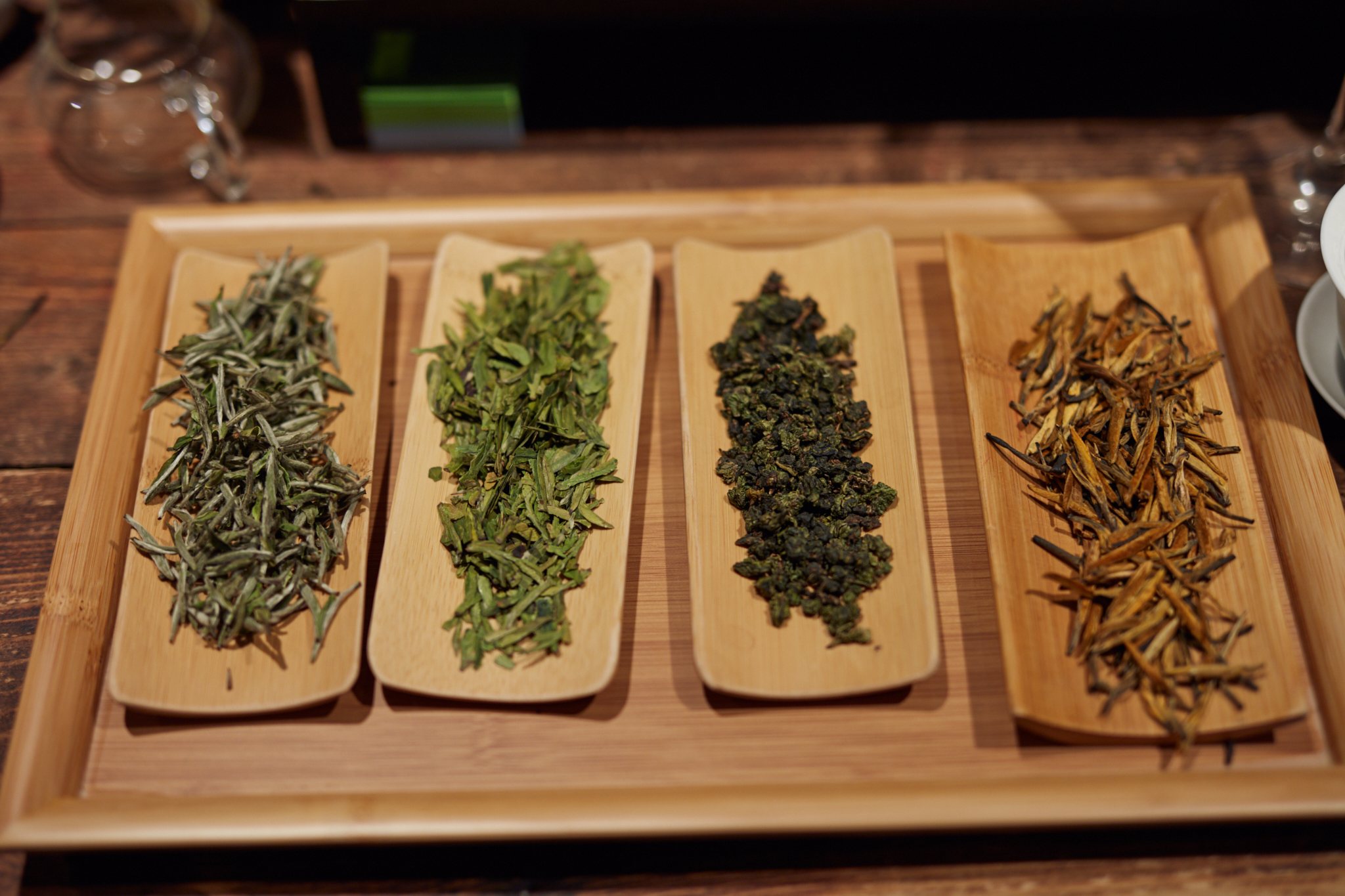How to choose Tea and Tea accessories?
How to choose tea?
We group teas by their primary sorts on our menu: WHITE TEA, GREEN TEA, MATCHA TEA, OOLONG TEA, BLACK TEA and PUER TEA. Moreover, our selection is further categorized by the production regions of our teas: JAPAN, CHINA, TAIWAN and INDIA. Accordingly, if you desire Taiwanese black tea, it is easy for you to find the right product. However, you need more information than that to make a well-informed choice. Thus, we have assigned various labels to the teas that describe their other significant characteristics.
Exact place of origin,
from which one can deduct the tea’s consumption and cultural values, moreover its aroma, taste, character, and price. In addition to the country of origin, the specific growing region is also referred to here. The name of the production region may include the province, prefecture, county, town, village, and tea mountain within the given country.
Harvesting time
and harvesting cycle, from which one can deduct the freshness, the intensity, and the character of the tea. Some teas can also vary in price and quality according to their harvest time. It is good to know that the first leaves of the spring harvest produce the most nutritious, finest, and most expensive tea leaves.
Description of the tea’s character,
outlining the sensory impressions of the tea leaves and decoctions during their examination and consumption. With these remarks, we would like to draw attention to the magnificence and unique properties of tea varieties. From these short descriptions, you can learn what to look out for when drinking a certain sort of tea, but it can also help you in the selection process.
Dosing and brewing instruction,
that include the recommended ratio of tea to water, its recommended water temperature, and soaking time. These factors primarily determine the enjoyment value of tea. For example, if you brew the tea for too long, it will get tannic and bitter, and if you steep it in too hot water, the taste and aromas will evaporate, making the infusion is less enjoyable.
Strength and caffeine content,
which shows the alertness-enhancing effect of the tea. Very light (caff +) and light (caff ++) teas are recommended for late-afternoon use, moderate (caff +++) teas are suitable for longer vigilance, while strong (caff ++++) and very strong (caff +++++) teas are suitable for morning or early afternoon consumption, for extra invigorating effects. Keep in mind that drinking tea after 7 p.m. can affect your sleep at night. The specified characteristics indicate the recommended time of day and condition for the tea’s consumption.
By physiological effects,
we mean other effects that have beneficial impacts on our mood, feelings, mental capacity, thinking, efficiency, energy flows, sense of heat, digestion, and the functioning of our whole body. If we look at the labels for physiological effects, we will be able to use more of the supportive power of tea to our advantage. These properties allow us for a more conscious choice of tea.
Brewing method:
in addition to traditional Japanese (chado, senchado) and Chinese (gongfucha) ceremonies, we can also utilize European quick brewing methods. However, for some tea sorts, quick brewing is not recommended because tea is more valuable, both culturally and in terms of money than just drinking it from a strainer in the workplace. The tea wasted in that way is not worthy of the natural gifts and the attentive work of people to whom we owe the very existence of tea culture.
Skills
We classified teas into five levels based on the attention and skill required to make them: beginner, practiced, advanced, master and all skills. They provide enjoyment and content for beginner to advanced tea consumers, pointing out the consumer’s potential for development. If you are a beginner on the tea tasting journey, it is advised to get used to the milder teas that are easier to make and understand the aromas of. All skills tea provides an enjoyable and lasting experience for all customers.
Recommended articles on this topic:
6 main tea types: White, Green, Matcha, Oolong, Black, Puer >>>>>>>

You will find the product description on the first tab and the important labels on the second tab. You can use the labels to understand the effects of the teas.

Description and tags on the product page
How to choose tea accessories?
Labels and features used on tea accessories besides the place of origin marker indicate if they are applicable for TRADITIONAL CHINESE/JAPANESE/EUROPEAN or rather the fast and easy tea brewing methods.
On one hand, the well-chosen accessory is more suitable for making certain teas than others, and on the other hand, it enhances the tea-making experience itself. The most important information is the usage characteristics, material, and size, so we took these as a starting point.
As tea making is not only a purposeful activity but also an artistic branch, ceramic art and tea-inspired art have developed hand-in-hand over the centuries. As a result, much more sophisticated objects than kitchen utensils have come to light in many cities with ceramic culture. Thus, various art styles specializing in tea consumption have developed.
In our tea shop, you will find not only simple objects for use but also high-value tea accessories, which we procure from the potters themselves. On these accessories categorized as art pieces, you can find labels and descriptions of their place of origin, designer, artistic style, and pottery village. We hope this information makes tea drinking even more enjoyable and valuable.
Tea ceramics are often decorated with various motifs that carry a hidden meaning. All of these embellishments contribute to an understanding of culture, artistic value, and intent. We will try to decipher these for you to help you make your choice. You can also find a description of the forms and motifs on our website.
Recommended articles on this topic:
A Visual Guide to Famous Chinese Ceramics>>>>>>>>>

